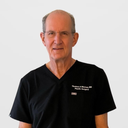I'm a male in his 30s and have had lifelong tear troughs. Most of the before/after pictures I see online show pretty good success with filling in the undereye/cheek area with fat to smooth out the troughs. I had a consultation with a doctor who suggested getting a blepharoplasty as well to cut the undereye fat and pull it down into the trough area, then fill in some fat. However to me it seems the damage to my face and extra cost may not be worth it. He is willing to do either or both.
Answers (5)
From board-certified doctors and trusted medical professionals
Dr. Jonathan Kulbersh, MD

Dr. Jonathan Kulbersh, MD
Board Certified Facial Plastic Surgeon
Answer
Dr. Edward Buckingham, MD

Dr. Edward Buckingham, MD
Board Certified Facial Plastic Surgeon
Answer
Dr. Thomas A. Mustoe, MD, FACS

Dr. Thomas A. Mustoe, MD, FACS
Board Certified Plastic Surgeon
Answer
Dr. Mats Hagstrom, MD (license on probation)
Dr. Mats Hagstrom, MD (license on probation)
Board Certified Plastic Surgeon
Answer
More Facial Fat Transfer Questions
See all Facial Fat Transfer Q&AWE SEND PRETTY
EMAILS
What’s trending? Who’s turning heads? Which TikTok myths need busting? We’ve got you. No fluff, no gatekeeping—just real talk. Get our free, unfiltered newsletter.
